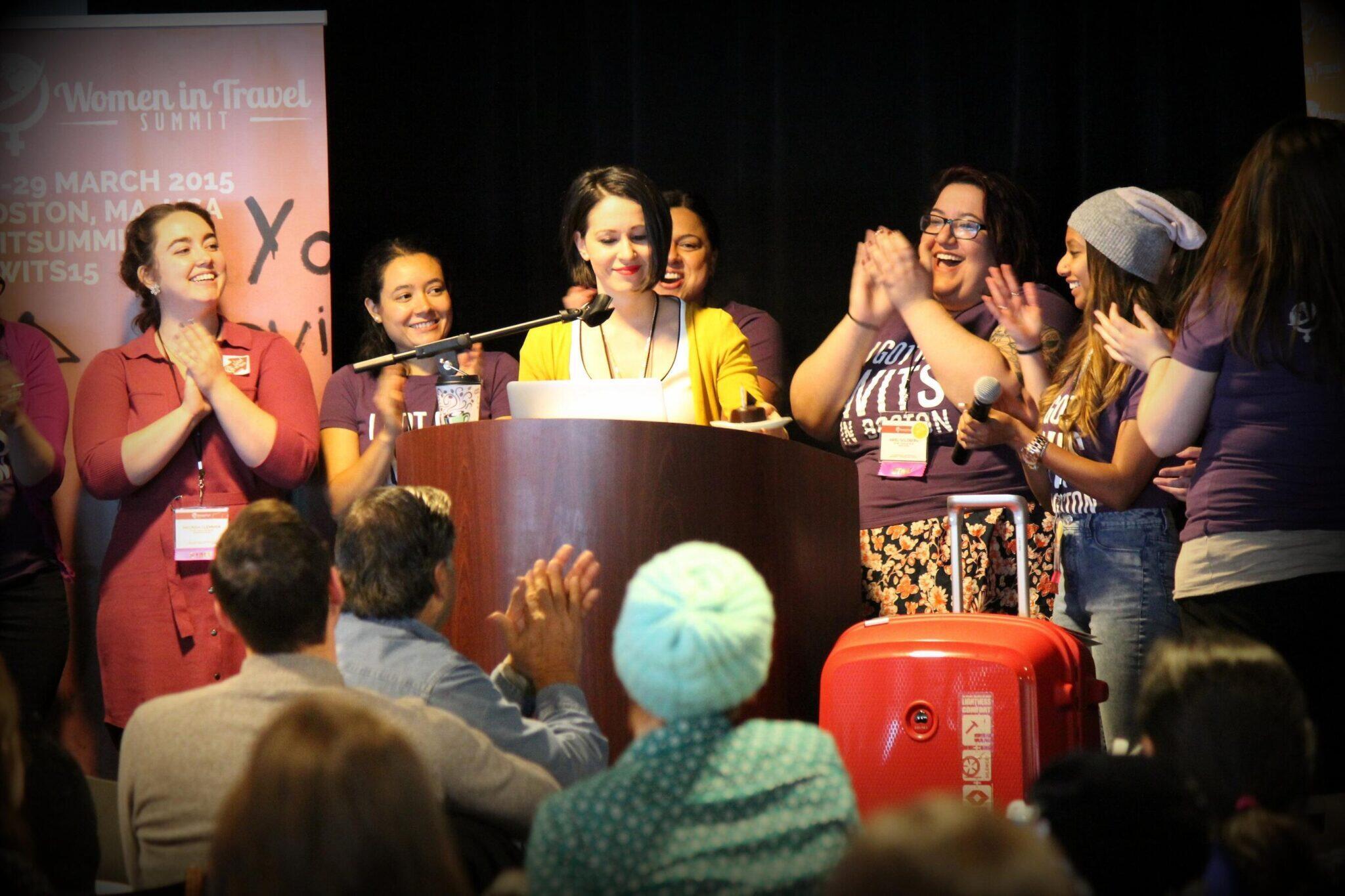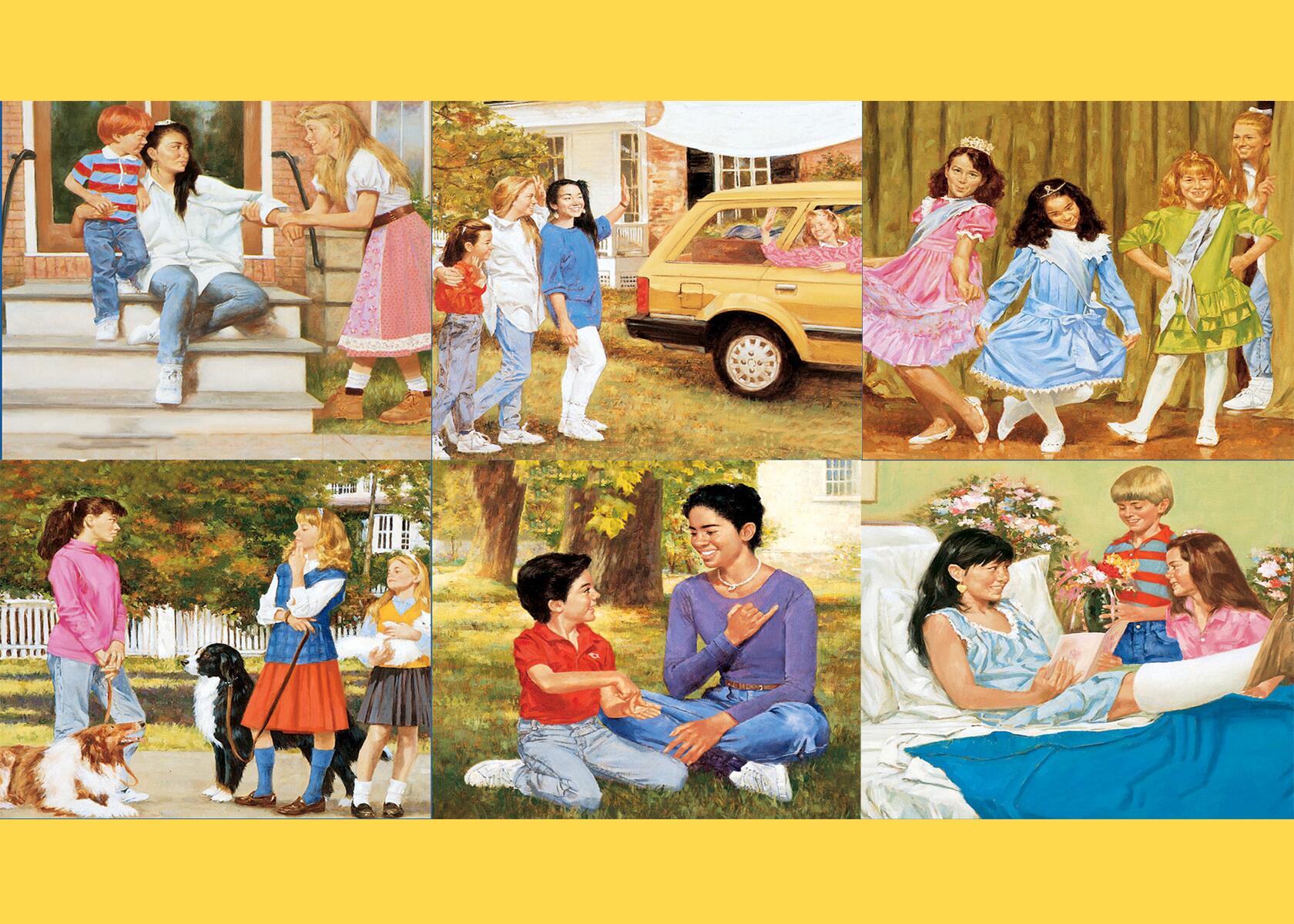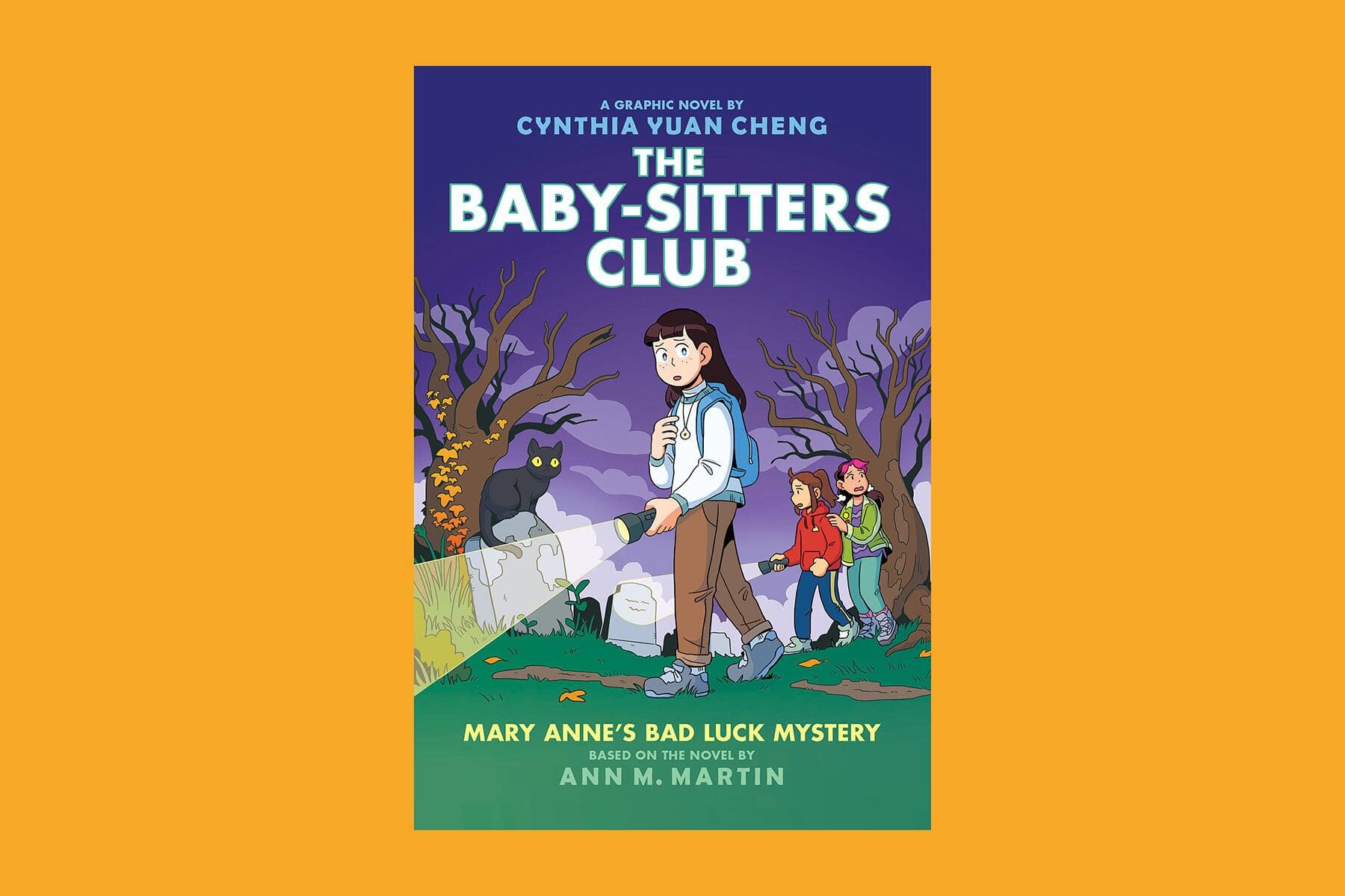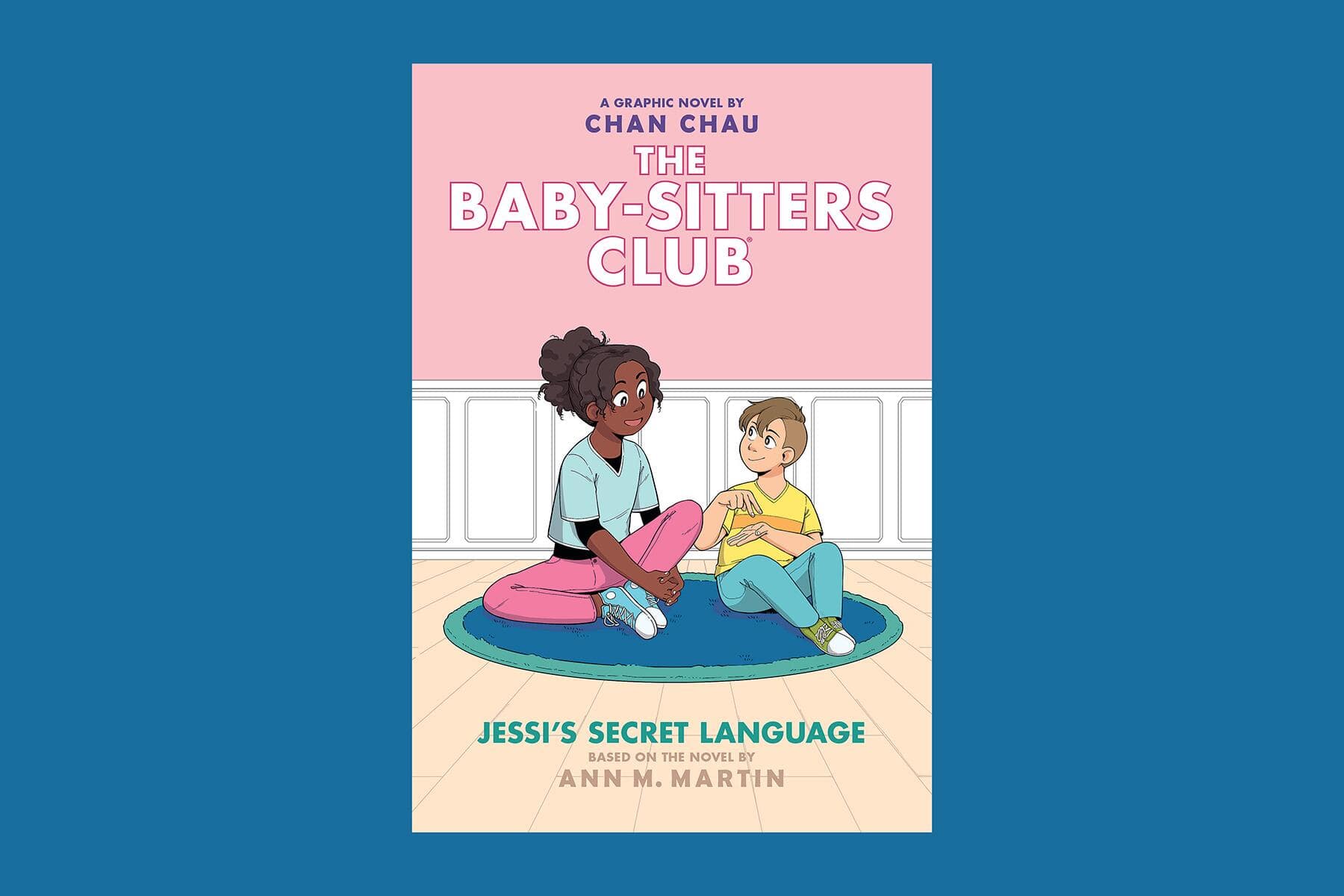The storied '80s and '90s favorite is getting a revamp for the next generation. But does that ruin the fun?
In 1992, my family of five packed ourselves into our Dodge Caravan to make the 20-hour trek from our Pittsburgh home to my grandparents in Florida. The midwinter break from the dreary Northeastern winter was needed, but before we could make it to sunny skies a terrible winter storm derailed our plans in the mountains of West Virginia. We slipped and slid to safety, skidding to a terrifying halt–not too far from a repair shop.
Wandering a dilapidated Wal-Mart while we waited for repairs, I picked a book off of a wobbly carousel display. It was Kristy’s Great Idea, the first book in the prolific series by Ann M. Martin, The Babysitter’s Club. Once the storm had settled and we got back on the road, I cuddled up in the back of the van with my new treasure. (In the actual back of the van, behind all the suitcases in the cargo area, squished on the floor with a delightful wall between myself and my twin 5-year-old brothers. Ah, the ’90s).
That is the first day I remember absolutely losing myself in a novel–the plot carried me along as the miles we drove seemed irrelevant. I devoured the story of four young girls, a bit older than me, launching a business and all of the drama that came with that endeavor. Thus began my lifelong tradition of starting each trip with the purchase of a brand new book that I don’t open until the car pulls out or the plane takes off. Now it is as simple as a click on my Kindle, but the thrill feels just the same as that unexpected purchase during a snowstorm. Over the years I amassed the entire series of Martin’s books and saved them for my kids.
Recommended Fodor’s Video
At a recent Scholastic book fair at their school, I helped students with their purchases and reveled in their excitement over new releases in their favorite series. A group of girls stood huddled around a familiar title– Kristy’s Great Idea. This time, though, it was in graphic novel form. As I flipped through the pages I recognized the familiar storyline of a book I have read a dozen times. It was exciting to see today’s kids so thrilled by the same book that first sparked my love for reading, even if it *gasp* had pictures.
Some adults have been critical of the rise in the popularity of graphic novels. A column by the Virginia Tech University Library highlights some of the negative stigma attached to books with pictures–namely that they are merely a stepping stone to “real” reading. A 2012 opinion piece in The Daily Nebraskan boldly claims that graphic novels “are not literature.” These are bold statements to lob at something that kids, apparently, are thoroughly enjoying.
“People often think graphic novels aren’t as complex and that’s not true at all.”
As I saw the excitement over these reimagined classics in my children’s school, I decided to reach out to some friends who read with kids every day for their jobs and see what they think. Erin Thompson is the youth services coordinator at Andrew Bayne Memorial Library in our Pittsburgh suburb. She finds the criticism of graphic versions of classic books to be entirely unwarranted. “They are reading. Everything is reading. They are high interest and colorful, and easier to break into chunks. People often think graphic novels aren’t as complex and that’s not true at all. The reading level of some of the graphic novels is relatively high.” Even her own neurodivergent child, whose reading level is well above age level, enjoys them. “My kid looks at novels and there are overwhelming blocks of words. Can she read them? Sure.” She focuses better, though, on the graphic novel version. There is also a better chance for visual representation with illustrations. Yes, in the original series Claudia was still Asian and Jessi was still Black. Seeing that on the page, though, is impactful for kids. The lack of representation of marginalized folx in literature is known to have a negative impact on kids. Graphic novels can help with that.
I also talked to Kimberlee Corrigan, who has been a reading specialist and third-grade teacher in Baltimore City Public Schools for 15 years. She did, in the past, feel some of the knee-jerk negative reactions to graphic novels that others have expressed.
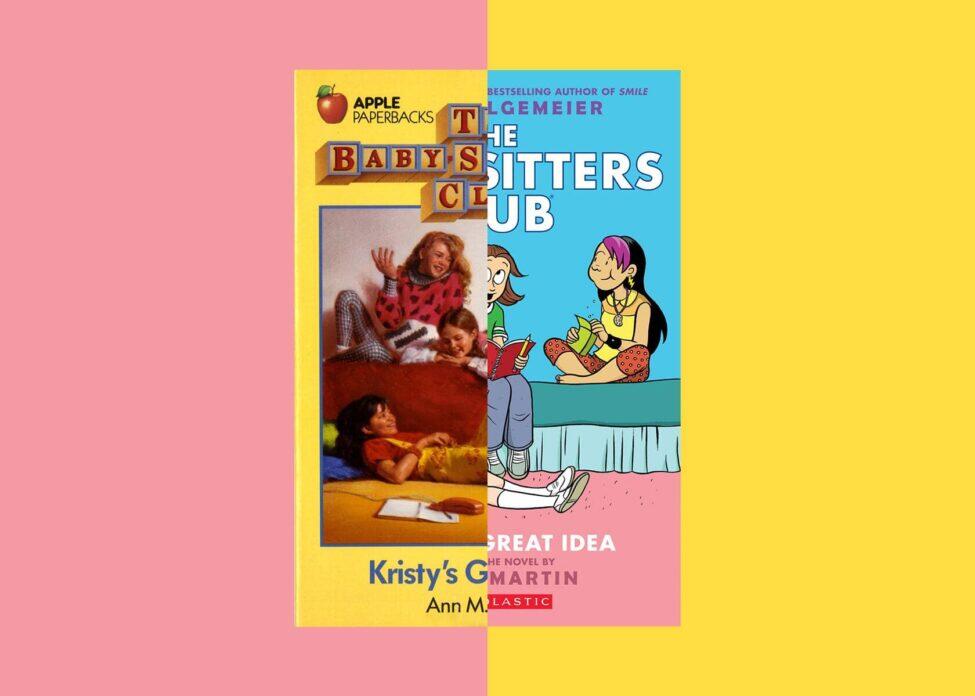
“I’ll be honest, when I saw they were making the Harry Potter series into illustrated versions–a part of me was horrified because I initially thought, ‘There is nothing better than your own imagination!’ At the same time, I know they are a different kind of work of art, and if it’s going to get kids into reading, that’s great.”
In her classroom, graphic novels are the books most likely to be absent from the shelves–simply because they are the most popular. Corrigan doesn’t mind. “Those are the ones that draw in kids that haven’t ever liked reading before. That is their entry point, they are the books that every kid in my class can read and access.” She notes there is a skill that is developed when children read text and use their mind’s eye to imagine the scene being described, but reading is also broader than just that goal. “It is really just about what is going to spur comprehension, understanding, and a love of reading.” One of her students is particularly in love with the Babysitter’s Club series of graphic novels and gets the same joy out of the characters that I once did.
As I think back to my first novel binge and the stack of slightly yellowed original Babysitter’s Club books stacked on the shelf of our playroom, I’ve decided it does not matter if my kids ever read that version. The strong friendships and chaotic hijinx of Kristy, Stacey, Claudia, and Mary Ann are reaching the next generation, and the format of delivery is actually irrelevant. What does matter is a kid who is so absorbed in a book that they lose track of time as the story moves them along. What does matter is another generation that excitedly packs a new book with an uncracked spine for vacation–even if it has pictures.


